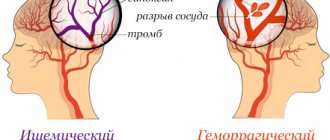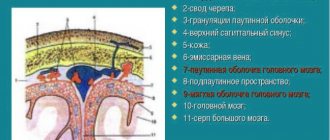The authors of a new study have identified neurons (nerve cells) that control aggression. Brain neurons “tell us” when to eat, sleep and wake up. But nerve cells in the brain can control more complex functions than just appetite or sleep. For example, recent research has identified the neurons that are to blame for our bad habits, as well as which brain cells cause anxiety. Now researchers have discovered neurons that trigger emotions such as aggression. The results of the scientific work were published in the journal Nature Neuroscience.
Relevance of the problem
Although the new study was conducted in mice, mammals share many of the same neural characteristics as humans. This helps to understand the neurobiological basis of aggression.
Scientists noticed that the rodents that showed the highest levels of aggression had active neurons in a region of the brain called the ventral premammillary nucleus.
(PMV).
The PMV is located in the hypothalamus, an area about the size of a peanut that spikes our adrenaline when we have to speak in public, confront an enemy, or go to a job interview.
The hypothalamus is an important emotional "center" that regulates our feelings of euphoria, sadness and anger.
Immune cells in the brain control nerve signals
Excited neurons, deprived of immune cells, cannot calm down and can lead the brain to epilepsy.
Immune cells in the brain called microglia not only protect the brain from infections and remove various cellular debris. We recently talked about how these cells edit neural networks - they can both destroy interneuron contacts and help form new contacts. That is, microglia directly interfere with the functioning of the brain.
Microglial cells (red) in the mouse brain. (Photo: ZEISS Microscopy / Flickr.com)
‹
›
Researchers from Mount Sinai Medical Center write in an article in Nature
that the influence of brain immune cells on neurons is actually even deeper. Microglia, it turns out, serve as a kind of brake pads for neural networks, preventing neurons from being unlimitedly excited. Here you need to remember that all neural activity is divided into two parts, excitation and inhibition. An impulse came to the neuron, and it transmitted this impulse further; Moreover, nerve cells can amplify incoming signals and, in response to one incoming impulse, generate several at once.
Such an excited neuron will actively excite those around it, but sooner or later it must stop. It is stopped by other neurons called interneurons, or inhibitory neurons. The signal from the excited inhibitory neurons suppresses the excitation in another neuron - and it gradually calms down.
Inhibitory neurons are extremely important: without them, excitatory nerve cells simply would never be able to stop - for example, they would continue to send a contractile signal to a tense muscle. Without neural inhibition, the nervous system is at risk of overexcitation, which can manifest itself in improper muscle function, emotional instability, and behavior in general.
But inhibitory neurons alone are apparently not enough in the brain. The authors of the work experimented with mice lacking microglial cells. When such mice were given a neurostimulator, they began to have epileptic seizures - that is, neurons from stimulation generated uncontrolled excitation. Normal mice, in which the immune cells were in place, did not have epileptic seizures.
Without microglia, the nerve tissue had less adenosine, a molecule that suppresses the excitability of neurons. (The same thing happened when microglial cells turned off the enzymes on which the production of adenosine depended.) We sometimes hear about adenosine in connection with coffee, because caffeine blocks the action of adenosine and thereby keeps neurons in an alert state. Adenosine prevents the neuron from releasing the neurotransmitter glutamate, which acts as a pathogen, and stimulates the functioning of sodium channels in the neuron membrane. Due to active sodium channels, the neuron becomes difficult to excite.
Excited neurons and microglia work on the principle of negative feedback: the neuron releases ATP (adenosine triphosphate) molecules, which attract microglial cells - and they, in turn, convert ATP into adenosine, which calms the excited neuron.
The calming effect of immune cells occurs only in gray matter, not in white matter. Moreover, this effect is limited only to a certain area of the brain, that is, microglial cells can only calm nearby neurons. In addition, such a system does not work very quickly, and therefore the authors of the work believe that immune suppression of neural signals works for a long time, when some neural circuit needs to be turned off for a long time. (Inhibition neurons are used for more rapid shutdown.) If the neural chain rests for too long, the synapses between neurons will disintegrate - that is, microglia can contribute to the dissolution of the nerve chains.
Microglia cells are not the only utility cells that interfere with neuronal function. In the brain there are also so-called astrocytes, nurse cells: they nourish neurons, support them and perform other auxiliary work. However, recently there is evidence that astrocytes directly interfere with the electrical activity of neurons - for example, they support special electrical waves in the brain that are necessary for higher cognitive functions.
All this complicates the overall picture, but on the other hand, this way you can better understand where certain neuropsychiatric disorders come from. The same microglia actively communicate with other immune cells of the body, and here it is easy to imagine how too much or too little inhibition could be associated with some kind of immune problems in the body.
Results of scientific work
In this way, the scientists were able to “force” mice to behave aggressively under conditions that would not normally elicit an aggressive response. Conversely, by deactivating the PMV neurons, they were able to stop the aggressive attack.
“We found that short-term activation of PMV cells can trigger a prolonged outbreak. This may explain why feelings of antagonism persist for a long time after an argument,” explains study author Stefanos Stagkourakis.
In addition, the scientists were able to change the “dominant and submissive” roles that are typically established among rodents.
Using a traditional experiment in which two mice are forced to confront each other in a long, narrow space, the researchers determined which mice were dominant and which were submissive.
Then, by deactivating PMV nerve cells in dominant rodents, they "turned" them into submissive ones, and vice versa.
“One of the most surprising results of our study was that the role we achieved by manipulating PMV activity lasted for up to 2 weeks,” says Christian Broberger.
The researchers hope their findings will shed light on possible pathways that can help us control anger and aggression.
Aggressive behavior and violence cause trauma and long-term psychological damage for many people. The new study adds fundamental biological knowledge about their origins.
The authors of another study claim that angry outbursts may increase the risk of heart attack.
Structure of neurons
Neuron diagram
Cell body
The body of a nerve cell consists of protoplasm (cytoplasm and nucleus), bounded on the outside by a membrane of lipid bilayer. Lipids consist of hydrophilic heads and hydrophobic tails. The lipids are arranged with hydrophobic tails facing each other, forming a hydrophobic layer. This layer allows only fat-soluble substances (eg oxygen and carbon dioxide) to pass through. There are proteins on the membrane: in the form of globules on the surface, on which growths of polysaccharides (glycocalyx) can be observed, thanks to which the cell perceives external irritation, and integral proteins that penetrate the membrane through, in which ion channels are located.
A neuron consists of a body with a diameter ranging from 3 to 130 microns. The body contains a nucleus (with a large number of nuclear pores) and organelles (including a highly developed rough ER with active ribosomes, the Golgi apparatus), as well as processes. There are two types of processes: dendrites and axons. The neuron has a developed cytoskeleton that penetrates its processes. The cytoskeleton maintains the shape of the cell; its threads serve as “rails” for the transport of organelles and substances packaged in membrane vesicles (for example, neurotransmitters). The cytoskeleton of a neuron consists of fibrils of different diameters: Microtubules (D = 20-30 nm) - consist of the protein tubulin and stretch from the neuron along the axon, right up to the nerve endings. Neurofilaments (D = 10 nm) - together with microtubules, provide intracellular transport of substances. Microfilaments (D = 5 nm) - consist of actin and myosin proteins, especially pronounced in growing nerve processes and in neuroglia. ( Neuroglia
, or simply glia (from ancient Greek νεῦρον - fiber, nerve + γλία - glue), is a collection of auxiliary cells of the nervous tissue. Makes up about 40% of the volume of the central nervous system. The number of glial cells is on average 10-50 times greater than neurons).
A developed synthetic apparatus is revealed in the body of the neuron; the granular ER of the neuron is stained basophilically and is known as the “tigroid”. The tigroid penetrates the initial sections of the dendrites, but is located at a noticeable distance from the beginning of the axon, which serves as a histological sign of the axon. Neurons vary in shape, number of processes, and functions. Depending on the function, sensitive, effector (motor, secretory) and intercalary are distinguished. Sensory neurons perceive stimuli, convert them into nerve impulses and transmit them to the brain. Effector (from Latin effectus - action) - generate and send commands to the working organs. Intercalary neurons - communicate between sensory and motor neurons, participate in information processing and the generation of commands.
There is a distinction between anterograde (away from the body) and retrograde (toward the body) axon transport.
Dendrites and axon
Main articles: Dendrite
,
Axon
Neuron structure diagram
An axon is a long extension of a neuron. Adapted for carrying excitation and information from the body of a neuron to a neuron or from a neuron to an executive organ. Dendrites are short and highly branched processes of a neuron, which serve as the main site for the formation of excitatory and inhibitory synapses affecting the neuron (different neurons have different ratios of axon and dendrite lengths), and which transmit excitation to the body of the neuron. A neuron may have several dendrites and usually only one axon. One neuron can have connections with many (up to 20 thousand) other neurons.
Dendrites divide dichotomously, while axons give off collaterals. Mitochondria are usually concentrated at branching nodes.
Dendrites do not have a myelin sheath, but axons may have one. The place of generation of excitation in most neurons is the axon hillock - a formation at the point where the axon departs from the body. In all neurons, this zone is called the trigger zone.
Synapse
Main article: Synapse
Synapse
(Greek σύναψις, from συνάπτειν - hug, clasp, shake hands) - the place of contact between two neurons or between a neuron and the effector cell receiving the signal. It serves to transmit a nerve impulse between two cells, and during synaptic transmission the amplitude and frequency of the signal can be adjusted. Some synapses cause depolarization of the neuron and are excitatory, while others cause hyperpolarization and are inhibitory. Typically, stimulation from several excitatory synapses is necessary to excite a neuron.
The term was introduced by the English physiologist Charles Sherrington in 1897.











